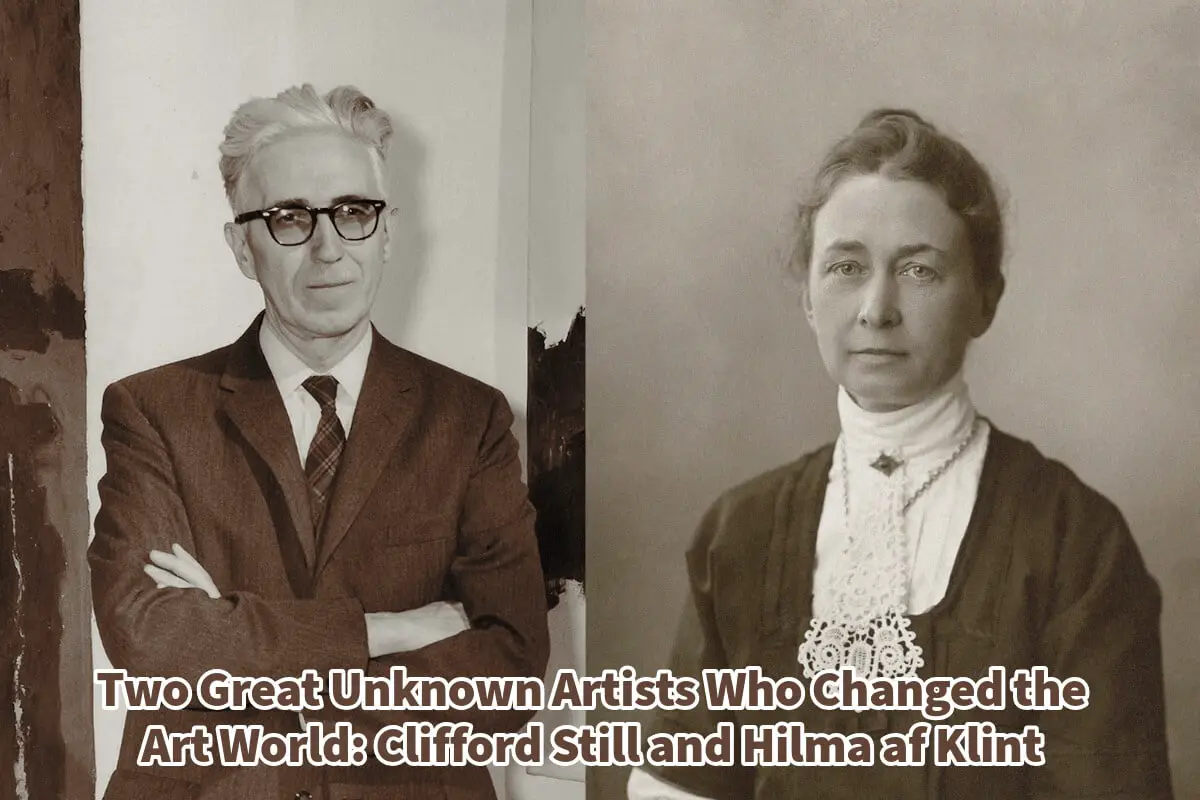Throughout art history, specific names dominate the conversation—Picasso, Van Gogh, Monet, and Kahlo, among others. Yet, the art world is vast, and many brilliant artists remain lesser-known despite their groundbreaking contributions to the evolution of art. Two such artists are Clifford Still and Hilma af Klint. Both were visionaries who redefined artistic expression in their unique ways, yet neither enjoys the widespread recognition that their contemporaries do.
This blog will explore the lives, works, and legacies of Clifford Still and Hilma af Klint—two great yet relatively unknown artists who changed the art world. We’ll delve into why their names don’t often appear in mainstream discussions, highlight five of their most significant works, and discuss where their masterpieces can be seen today.
Table of Contents
- Clifford Still: A Pioneer of Abstract Expressionism
- Hilma af Klint: The Forgotten Pioneer of Abstract Art
- How Clifford Still and Hilma af Klint Changed the Art World
- Why Are They Still Relatively Unknown?
- Related Questions
Clifford Still: A Pioneer of Abstract Expressionism
Who Was Clifford Still?

Clifford Still (1904–1980) was one of the leading figures of Abstract Expressionism, a movement that emerged in the United States in the mid-20th century. Alongside artists like Jackson Pollock and Mark Rothko,
Still developed a revolutionary approach to painting that emphasized raw emotion, bold gestures, and the rejection of traditional forms.
Still’s work is characterized by large-scale canvases filled with jagged, textured areas of color. His paintings evoke a sense of vastness and depth, often compared to natural landscapes or geological formations.
Unlike many of his peers, Still avoided the art world’s spotlight and chose to keep much of his work out of public view during his lifetime.
Why Is Clifford Still Not as Well-Known?
Reclusive Nature:
Still was notoriously private and resisted the commercial aspects of the art world. He refused to participate in group exhibitions and rarely sold his work to collectors.
Limited Exposure:
Much of Still’s work remained in his possession until his death, meaning it wasn’t widely seen or discussed during his lifetime.
Focus on Integrity:
Still believed that his art should speak for itself, without the influence of critics, dealers, or institutions. This stance limited his exposure but preserved the purity of his vision.
Five Great Works by Clifford Still
PH-385 (1949)
A quintessential example of Still’s jagged, abstract style, this painting features bold swaths of red and black that seem to tear through the canvas.

PH-401 (1957)
This work showcases Still’s mastery of texture, with layers of color creating a dynamic and almost geological effect.
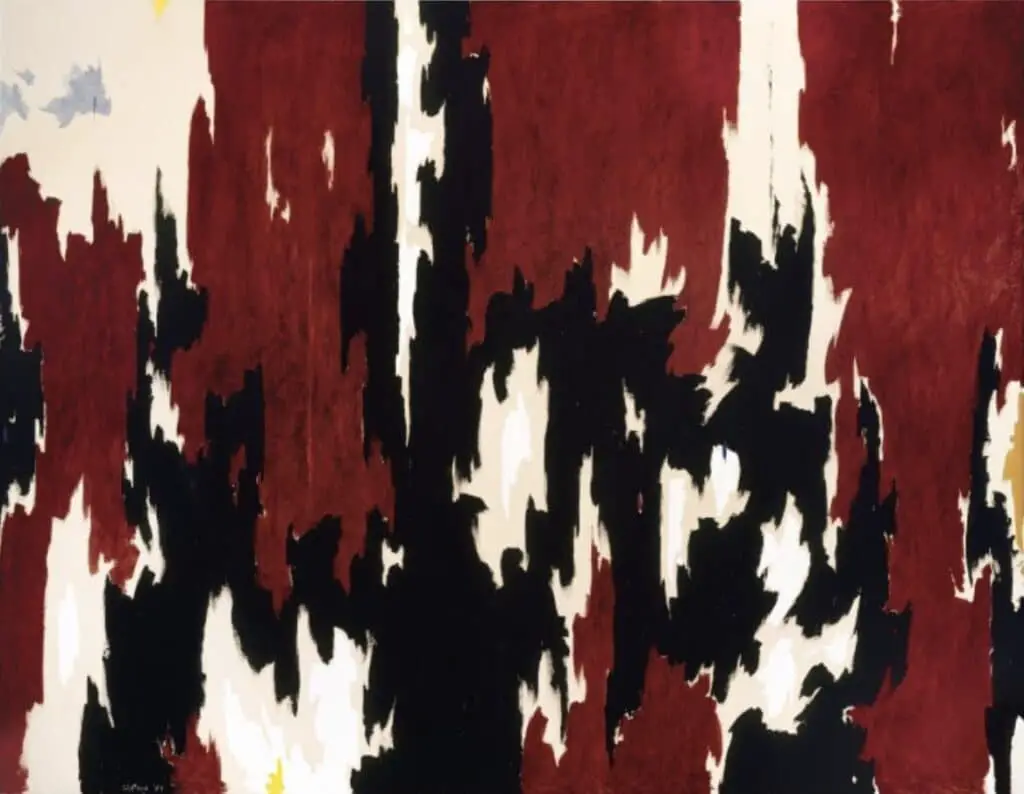
PH-960 (1950)
A striking composition dominated by yellow, this painting evokes a sense of light and energy.
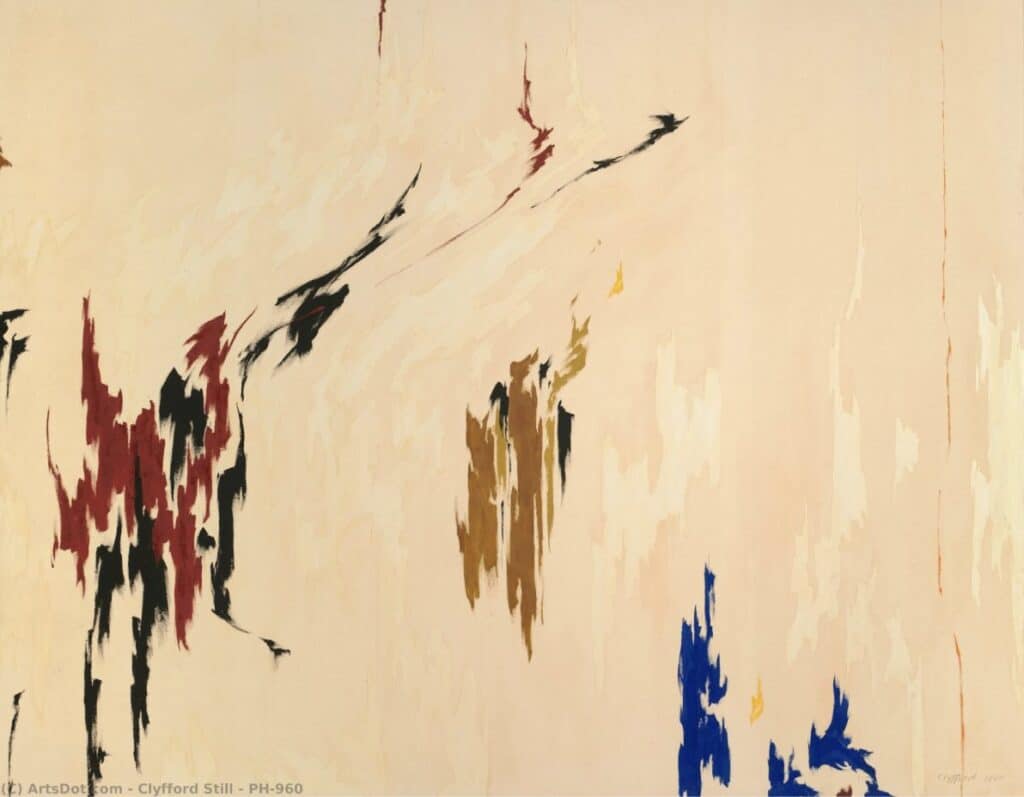
PH-49 (1944)
One of Still’s earlier works, this piece demonstrates his transition from figurative art to abstraction.
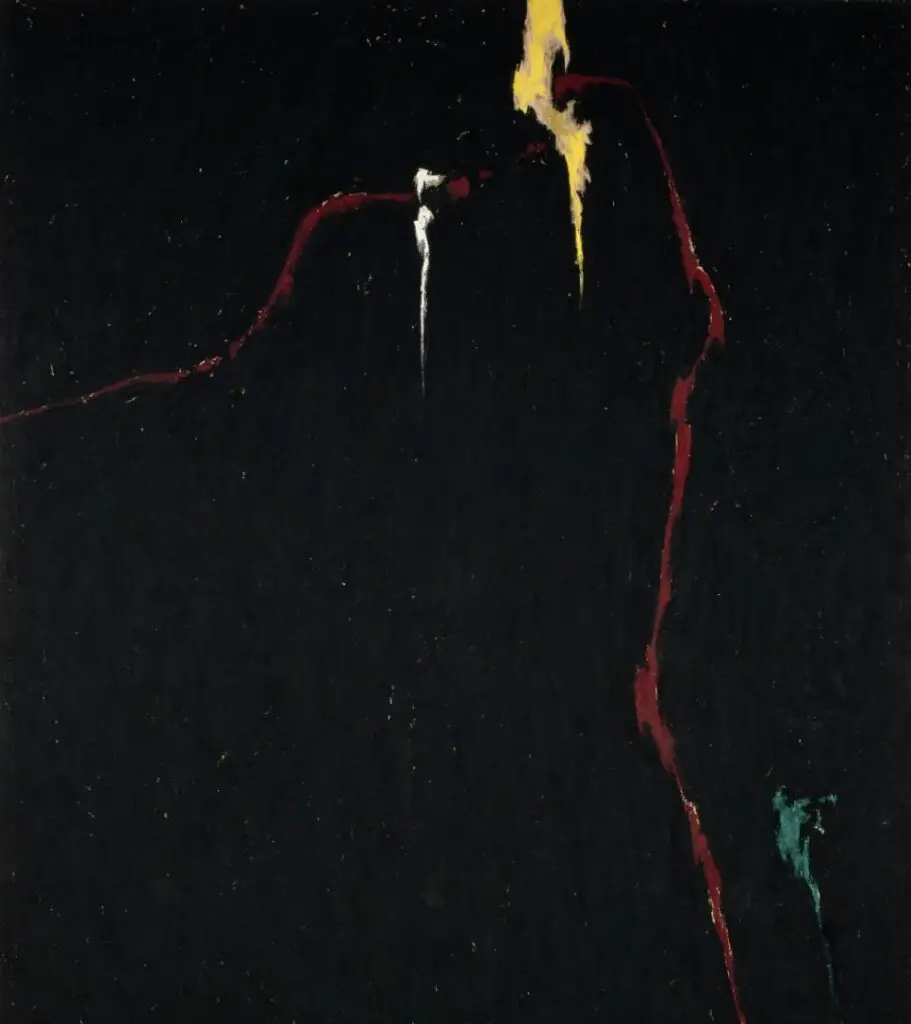
PH-1033 (1976)
A late-career masterpiece, this painting reflects Still’s continued exploration of color and form.
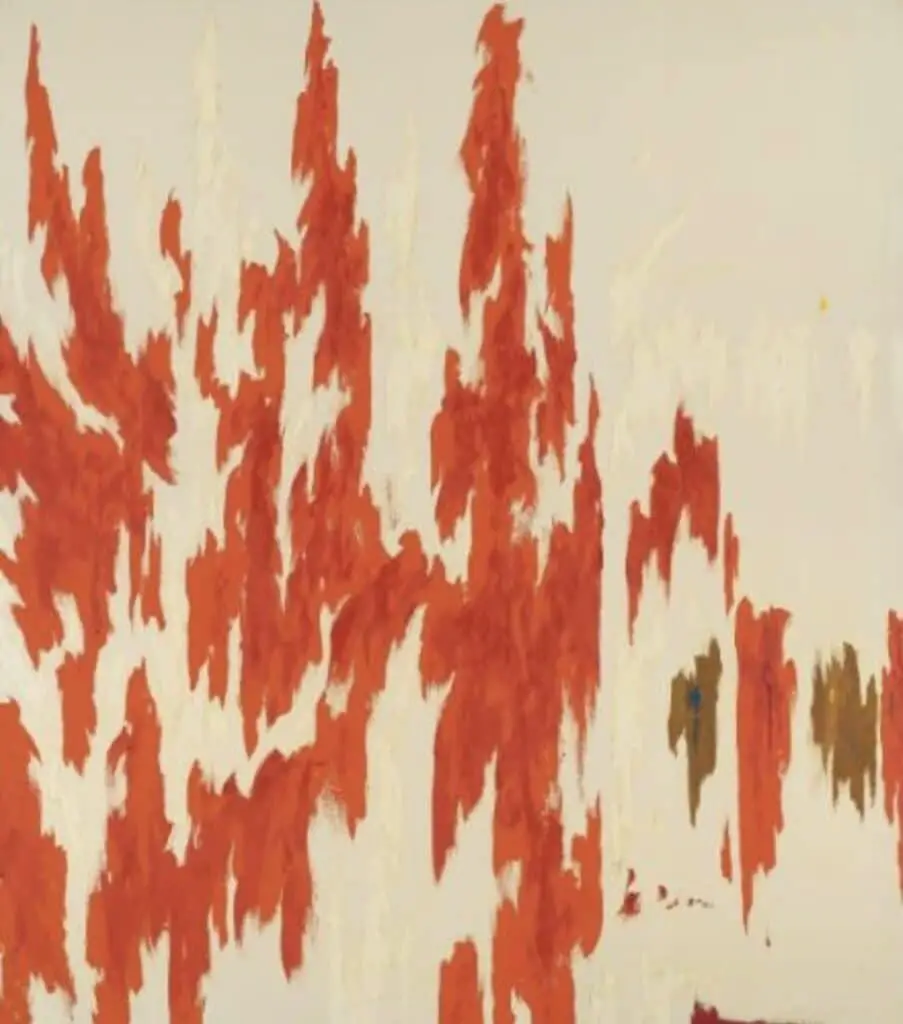
Where Can Clifford Still’s Work Be Seen?
Clifford Still’s legacy is preserved at the Clifford Still Museum in Denver, Colorado. This museum houses the majority of his work, including nearly 95% of his output, as stipulated by Still himself.
The museum provides an unparalleled opportunity to experience Still’s art in its entirety and understand his profound impact on Abstract Expressionism.
Hilma af Klint: The Forgotten Pioneer of Abstract Art
Who Was Hilma af Klint?
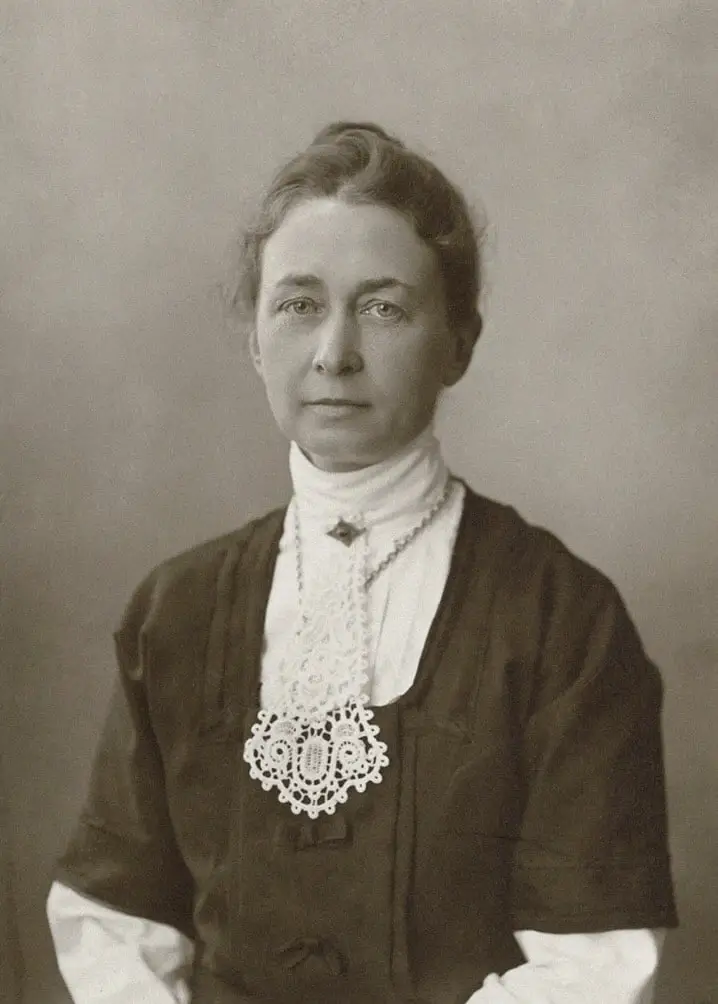
Hilma af Klint (1862–1944) was a Swedish artist whose work predates the Abstract Expressionist movement by decades. She began creating abstract paintings as early as 1906, long before artists like Kandinsky and Malevich were credited with pioneering abstraction.
Af Klint’s art was deeply spiritual, inspired by her fascination with Theosophy, mysticism, and the idea of a universal consciousness. Geometric shapes, vibrant colors, and symbolic imagery characterize her works.
Af Klint believed her paintings were guided by higher forces and intended them to be understood by future generations.
Why Is Hilma af Klint Not as Well-Known?
Ahead of Her Time:
Af Klint’s abstract works were created in an era dominated by realism and figurative art. Her innovative style was not widely understood or appreciated during her lifetime.
Limited Public Access:
Af Klint stipulated that her abstract works should not be shown until 20 years after her death, believing the world wasn’t ready to understand them.
Gender Bias:
As a woman in the male-dominated art world, af Klint faced significant barriers to recognition and inclusion.
Five Great Works by Hilma af Klint
Primordial Chaos (1906–1907)
A series of vibrant, abstract paintings that explore themes of creation and universal order.
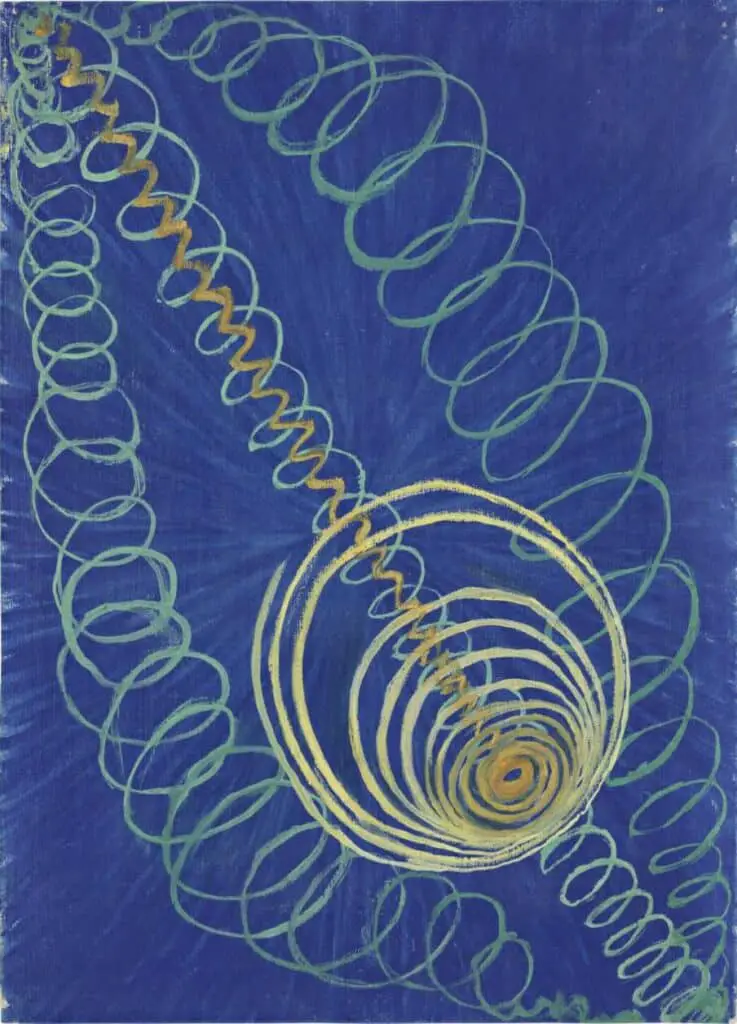
The Ten Largest (1907)
Monumental works representing the stages of human life, from childhood to old age.

Tree of Knowledge (1913–1915)
A symbolic exploration of the relationship between science, spirituality, and nature.
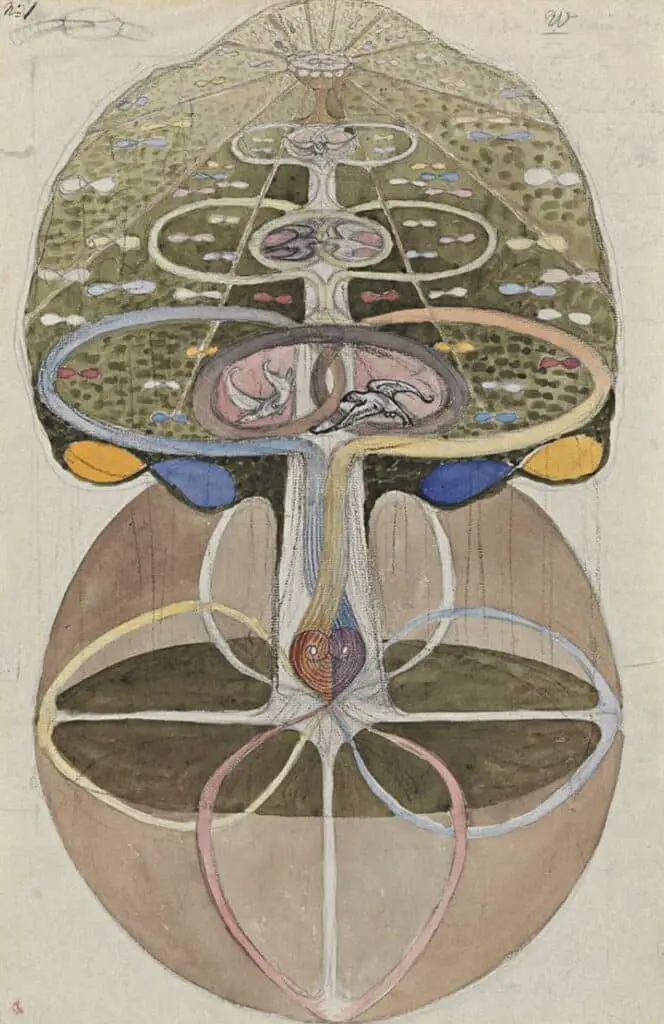
Altarpieces (1915)
Mystical and geometric works are intended to convey spiritual truths.
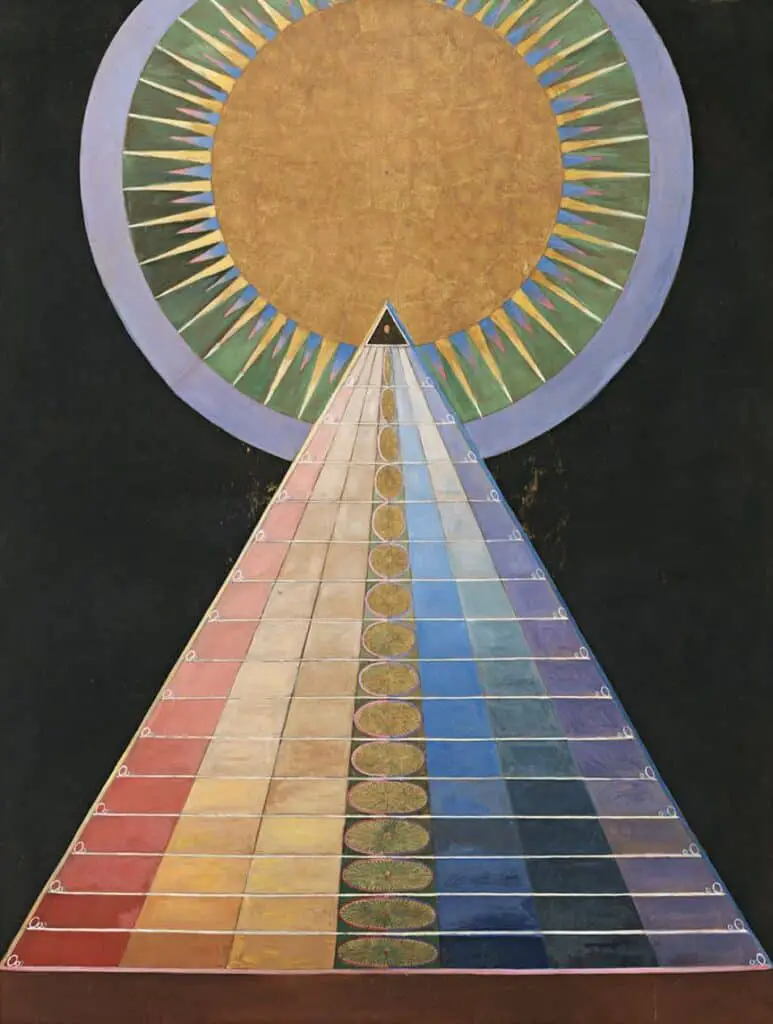
Group IV, The Evolution (1908)
A stunning series that reflects af Klint’s belief in the interconnectedness of all life.
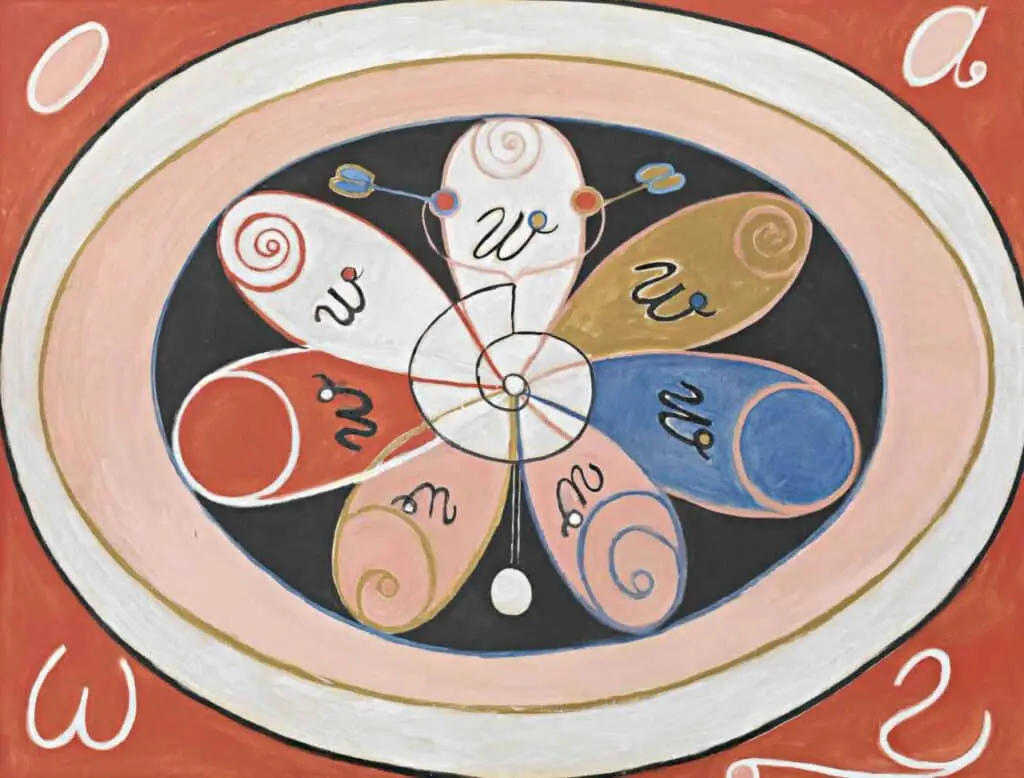
Where Can Hilma af Klint’s Work Be Seen?
Most of Hilma af Klint’s work is housed at the Moderna Museet in Stockholm, Sweden. The museum offers an extensive collection of her paintings, allowing visitors to explore her visionary approach to abstraction.
Her works have also been featured in major international exhibitions, including at the Guggenheim Museum in New York, where her retrospective drew widespread acclaim.
How Clifford Still and Hilma af Klint Changed the Art World
Despite their relative obscurity, Clifford Still and Hilma af Klint made profound contributions to the evolution of art.
Clifford Still’s Impact
Still’s rejection of traditional forms and emphasis on emotion helped define Abstract Expressionism as a movement. His commitment to artistic integrity and independence set a precedent for future generations of artists seeking to break free from commercial pressures.
Hilma af Klint’s Impact
Af Klint’s pioneering abstract works challenge the traditional narrative of art history, proving that abstraction existed long before it was formally recognized. Her spiritual approach to art continues to inspire contemporary artists exploring themes of mysticism and universal consciousness.
Why Are They Still Relatively Unknown?
Both Clifford Still and Hilma af Klint share a common trait: their unwillingness to conform to the art world’s expectations. While this preserved the purity of their vision, it also limited their exposure during their lifetimes.
Additionally, the art world has historically favored male artists and those who actively engage with galleries, critics, and collectors. Af Klint’s gender and Still’s reclusive nature contributed to their marginalization in mainstream art history.
Clifford Still and Hilma af Klint may not be household names, but their contributions to the art world are undeniable. Both artists challenged conventions, explored new forms of expression, and paved the way for future generations.
For art enthusiasts, visiting the Clifford Still Museum in Denver and the Moderna Museet in Stockholm offers an unparalleled opportunity to experience the brilliance of these two visionaries. Their works remind us that true innovation often lies beyond the spotlight, waiting to be discovered by those willing to look deeper.
By celebrating the legacy of Clifford Still and Hilma af Klint, we honor the transformative power of art and its ability to transcend time, place, and recognition.
Anita Louise Art is dedicated to art education, great artists, and inspiring others to find and create their art. We love art that uplifts and inspires. #ArtToMakeYouSmile! #ArtToMakeYouHappy!
If you want to see any of my art, you can find out more by clicking here. If you are interested in what inspires me and my paintings, you can discover more by clicking here.
We have a free newsletter and would love you to be part of our community; you can subscribe to the newsletter by clicking here. If you have any questions, I would be happy to talk to you anytime. You can reach me, Anita, by clicking here.
Subscribe to our Anita Louise Art YouTube Channel with great videos and information by clicking here.
Join us for our podcast “5 Minutes With Art.” Spend just 5 minutes a week with us to discover and learn about great art and artists. You can find out more about our podcast by clicking here.
Related Questions
The Timeless Beauty of Caravaggio: Master of Light and Shadow
Caravaggio’s innovative use of light and shadow, known as chiaroscuro, set him apart from his contemporaries and paved the way for future generations of artists. His powerful, often controversial works were marked by dramatic realism and emotional intensity that continues to captivate art lovers and inspire creators to this day. Read on as we will explore how Caravaggio revolutionized art through his mastery of light and shadow, cementing a legacy that remains vibrant more than 400 years after his time.
By clicking here, you can learn more by reading The Timeless Beauty of Caravaggio: Master of Light and Shadow.
.
Caravaggio: The Master Of Light And Dark
Caravaggio’s innovative approach to chiaroscuro revolutionized the art world, creating dramatic contrasts that brought his subjects to life with unprecedented realism and emotional depth. Caravaggio’s pioneering use of chiaroscuro distinguished his work and left a profound and lasting impact on future generations of artists. His ability to manipulate light and shadow with such precision and effect earned him the reputation of a true master, influencing countless artists and shaping the course of art history.
By clicking here, you can learn more by reading Caravaggio: The Master Of Light And Dark.
Caravaggio: The Bad Boy Of Art And His Lasting Impact
Caravaggio is not an artist without controversy. He has earned the moniker “the Bad Boy of Art” for his tumultuous life and rebellious nature. Despite his controversial lifestyle, Caravaggio’s contributions to art were groundbreaking, and his mastery of chiaroscuro revolutionized how light and shadow were used in painting. Read on as we explore Caravaggio’s life, artistic innovations, and enduring legacy.
By clicking here, you can learn more by reading Caravaggio: The Bad Boy Of Art And His Lasting Impact.

